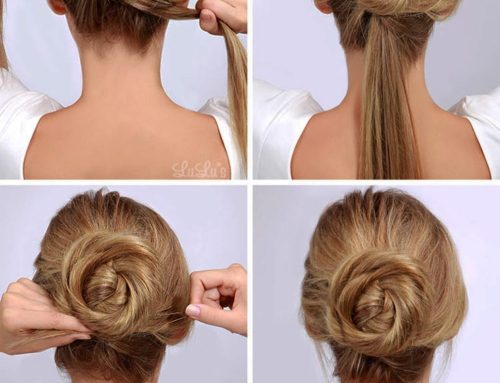I. Introduction: The Art and Journey of Wig Making
Wig making is not just a craft; it’s a journey through time, reflecting fashion’s ever-changing tides and the profound need for personal transformation. From the ancient Egyptians to modern-day fashionistas, wigs have served as symbols of status, tools of disguise, and solutions for hair loss. They’ve evolved from simple hairpieces made of wool and plant fibers to sophisticated, natural-looking creations that blend seamlessly with the wearer’s own hair.
Enter Nikia Londy, a maestro in the realm of wig making, whose journey into the world of hair augmentation began over two decades ago. With a keen eye for detail and a passion for transformation, Nikia has become a beacon of innovation in the wig industry. Her credentials are not just framed certificates hanging on a wall; they are the countless heads she has crowned with confidence and style. Londy’s work is not just about creating a wig; it’s about crafting a story, a persona, and sometimes, a whole new life for her clients.
But Nikia’s journey is more than personal success; it’s a testament to the evolution of wig making itself. Once a secretive trade passed down through generations, it has blossomed into a booming industry, thanks to pioneers like Londy. Her experience reflects the shift from synthetic, one-size-fits-all wigs to custom-tailored pieces that celebrate individuality and embrace diversity.
In the hands of an expert like Nikia Londy, wig making transcends its traditional boundaries, incorporating new technologies and innovative materials. She has witnessed firsthand the industry’s transformation, from the use of crude wig blocks to advanced 3D scanning technology, ensuring each wig is as unique as the person wearing it.
Nikia’s story is not just about the hairs she weaves but the lives she touches. Her dedication to her craft goes beyond the superficial, addressing the deep emotional and psychological impact of hair loss. Through her work, she has not only restored hair but also confidence and hope in her clients, making her a true artist and healer in the world of wig making.
In the following sections, we’ll delve deeper into the intricacies of wig making, guided by Nikia’s expert insights, exploring the delicate balance between artistry and technical precision that defines this fascinating craft.
II. Preparation and Planning
Crafting a wig is akin to painting a masterpiece; it begins with a blank canvas and a vision. The canvas, in this case, is the future wearer’s head, and the vision is a hairpiece that perfectly complements their features and style. Let’s delve into the meticulous process of preparing and planning a custom-fit wig, guided by the expert insights of Nikia Londy.
A. Taking Measurements
The journey to a bespoke wig starts with precision. Measuring the head is not just about wrapping a tape measure around the scalp; it’s an art that demands attention to detail. Every inch and curve of the head must be accounted for, from the nape of the neck to the crown’s peak. Nikia Londy emphasizes the importance of these measurements, noting that a fraction of an inch can make the difference between a wig that feels like a natural extension of oneself and one that is merely worn.
Accurate head measurements are the blueprint for the wig, dictating its size, shape, and how it will sit on the wearer’s head. This precision ensures that the wig will not only fit snugly and comfortably but also move naturally, mimicking the sway of real hair. It’s a process that requires patience and skill, often involving multiple tools like flexible tape measures, calipers, and even 3D scanning technology in modern wig making.
B. Choosing Materials
Once the measurements are set, the next step is selecting the right materials. This choice is pivotal and often reflects the wearer’s lifestyle, needs, and personal taste. Real human hair, with its natural sheen and texture, offers versatility and durability. It can be styled, colored, and treated just like one’s hair, providing a realistic appearance and feel. However, Nikia points out that real hair wigs require more care and maintenance and are a significant investment.
On the other hand, synthetic hair has made remarkable strides in quality and appearance, thanks to technological advancements. Modern synthetic wigs can mimic the look and feel of real hair, often at a fraction of the cost. They are easier to maintain, retaining their style and color over time. However, they lack the versatility of human hair wigs and can be less durable under heat styling and environmental exposure.
In addition to hair, other materials play crucial roles in wig construction. Wig blocks, usually made from canvas or Styrofoam, serve as the mold upon which the wig is built. Cotton lace forms the base, providing a lightweight and breathable foundation that mimics the natural scalp. Ventilation needles, akin to tiny crochet hooks, are essential tools for hand-tying each strand of hair, creating the illusion of hair growing from the scalp.
In the world of wig making, every detail counts, from the initial measurements to the final choice of materials. Nikia Londy’s expertise underscores the careful planning and preparation that goes into creating a wig that not only looks beautiful but feels like a part of the wearer’s own identity. It’s a testament to the blend of artistry and technical prowess that defines the craft of wig making.
III. Creating the Wig Base
Embarking on the journey of creating a wig base is like laying the foundation of a house; it requires precision, patience, and the right tools to ensure everything else falls into place perfectly. Let’s explore the meticulous process of forming a wig foundation and preparing the hair, guided by the expertise of seasoned professionals like Nikia Londy.
A. Forming the Wig Foundation
The creation of a wig starts with a solid foundation, and this begins with the wig block. A wig block is essentially a head-shaped form, typically made from canvas-covered cork or Styrofoam, which serves as a stand-in for the wearer’s head. To start, you transfer the detailed head measurements onto the wig block. This process involves drawing the hairline, ear-to-ear, and front-to-back measurements directly onto the block, creating a blueprint for your wig.
Securing cotton ribbons around the outlined measurements on the wig block is the next critical step. These ribbons act as a sturdy base to which the wig’s hair will be attached. Nikia Londy suggests using small tacks or pins to attach the ribbon tightly around the block, ensuring it mimics the shape of the head and hairline accurately. The precision here is vital as it sets the stage for a well-fitted final product.
Following the ribbons, wet cotton lace is applied. This lace, when moistened, becomes pliable, allowing for easy manipulation and adherence to the contours of the wig block. The lace is then carefully stitched onto the cotton ribbons, creating a seamless and secure base for the wig hair. This step is crucial for achieving a natural-looking scalp appearance in the final wig.
B. Hair Preparation
Once the foundation is set, attention shifts to the hair. Choosing between real and synthetic hair is a significant decision that impacts the wig’s look, feel, and longevity. After selecting the appropriate hair type, the preparation process begins. This involves sorting the hair into uniform lengths and aligning the strands so they lay flat and smooth. Techniques like combing, washing, and treating the hair are employed to ensure each strand is in optimal condition for the wig-making process.
Detangling and straightening the hair is a meticulous task. Tools like wide-tooth combs, detangling brushes, and sometimes straightening irons are used, especially for real hair, to achieve a silky and manageable texture. Nikia Londy emphasizes the importance of this step, as well-organized and tangle-free hair is easier to work with and results in a more professional-looking wig.
In both steps, A and B, the preparation involves a blend of artistry and technical skill. Each action, from measuring and cutting the lace to combing and straightening the hair, is performed with a focus on creating a natural, comfortable, and aesthetically pleasing wig. The foundation and hair preparation are not just about building a wig; they’re about crafting an extension of the individual’s personality and style, a theme that resonates deeply in the wig-making community.
IV. Wig Assembly
Creating a wig is an art that combines skill and creativity, with wig assembly being the stage where things really start to come together. This process, often detailed and meticulous, brings life to the wig, transforming it from a mere base and strands of hair into a wearable piece of art. Let’s delve into the essentials of ventilating and constructing a wig, as guided by experts in the field like Nikia Londy.
A. Ventilating the Wig
Ventilating a wig is the process of adding hair to the wig cap or foundation, creating a full and natural-looking head of hair. The first step in this delicate process involves selecting the right ventilating needle. These needles come in various sizes, and the choice depends on how many strands of hair you intend to knot in one go. For a more natural and less dense appearance, a smaller needle that pulls fewer strands at a time is preferred.
The act of knotting the hair onto the lace foundation is intricate. Each strand is carefully hooked and pulled through tiny holes in the lace, then knotted to secure it in place. This method requires patience and precision to ensure the hair is evenly distributed, mimicking the natural density and growth patterns of real hair. According to Londy, the key is to achieve a balance that looks natural — too few hairs can make the wig look sparse, while too many can make it look unnaturally thick.
B. Constructing the Wig
The construction of the wig begins at the neckline, working upwards to ensure even coverage. Starting from the neck up is strategic, as it allows the hair to lay naturally, cascading down in a way that mirrors how hair naturally falls. As you move to the sides and top of the wig, the direction in which each strand is knotted becomes crucial. Varying the direction of the hair strands not only contributes to a natural look but also allows for styling versatility post-assembly.
For instance, on the sides of the wig, the hair should be knotted with double knots for extra security, given these areas often endure more handling. On the crown and top, single knots are preferable to prevent an overly bulky appearance, ensuring the wig maintains a natural contour and flow. Londy emphasizes the importance of mimicking natural hair growth patterns, suggesting that the hair should be tied in different directions on the crown to replicate the way hair naturally swirls and shifts.
Incorporating personal anecdotes, like those from Londy who recalls her early days of trial and error in wig making, adds a layer of authenticity and relatability to the process. She shares tales of wigs that were too thick at the top or too thin at the back, learning from each to perfect her craft. These stories not only provide learning opportunities but also humanize the meticulous art of wig making, reminding us that even experts started as beginners.
In conclusion, assembling a wig is akin to painting a portrait; every stroke, or in this case, every knot, contributes to the final masterpiece. With the right tools, techniques, and a bit of patience, the process of ventilating and constructing a wig unfolds as a rewarding art form, allowing wig makers to channel their creativity and technical skills into creating beautiful, lifelike hairpieces.
V. Finishing Touches
The journey of crafting a wig doesn’t end with assembling the strands; it’s the finishing touches that truly bring the piece to life, ensuring it’s not just a wig, but a reflection of personal style and craftsmanship. Let’s dive into how these final steps transform a basic structure into a masterpiece of wearable art.
A. Final Fitting and Styling
After the meticulous process of ventilating and constructing, the wig is almost ready. The final fitting is crucial; it’s where the creator gets to see the fruits of their labor come to life. Trying on the unfinished wig is more than just checking the fit—it’s about feeling the personality of the piece and ensuring it harmonizes with the wearer. Adjustments might be necessary, as even the smallest tweak in tightness or positioning can make a significant difference in comfort and appearance.
Cutting the hair into the desired style is where the real transformation happens. Whether it’s a bob, layers, or long flowing locks, this step requires a blend of artistic flair and technical skill. Nikia Londy often shares how the cut can make or break the wig’s final look, emphasizing the need for a stylistic eye and steady hands. She also mentions the unique technique of sewing in steel springs, especially around the temples and neck, to add volume and natural movement. These springs, hidden beneath the hair, act like the wig’s own skeleton, giving it life and bounce that mimics natural hair.
B. Detailing and Customization
The devil is in the details, and in wig making, this couldn’t be truer. Covering the ribbons and seamlessly hiding the construction elements are what elevate a homemade wig to professional standards. This could involve carefully placing hair over the base edges or using color-matched materials to ensure nothing peeks through that shouldn’t. It’s like painting a canvas, where each stroke contributes to the overall picture.
Customization is the final, personal touch. Adjusting the parting, thinning out areas for a more natural density, or adding highlights can make the wig uniquely tailored. Londy often speaks of this stage as “meeting the wig,” where she gets to know its character and essence. It’s also a moment for the wig maker to imprint a part of their artistic identity, merging their vision with the practical needs and style preferences of the wearer.
In crafting a wig, every step is a building block towards creating a piece that’s not just worn, but lived in. The final fitting and styling, followed by meticulous detailing and customization, are what transform a collection of materials into a piece that can proudly be called a work of art. As Londy puts it, “It’s where skill meets soul, and a wig becomes more than just hair—it becomes a story, a personality, a piece of the person who will wear it.
VI. Additional Wig Tutorials
Wig-making isn’t just about creating realistic hairpieces; it’s a form of art that can transport us into different characters and worlds. Easy costume wigs are a fantastic project for beginners, where one can experiment with vibrant colors and exaggerated styles, perfect for Halloween or themed parties. Imagine crafting a bright pink, sky-high wig for a fairy tale character or a sleek, dark jellicle cat wig inspired by the famous musical “Cats.” These projects allow for creative freedom and are forgiving of minor mistakes, making them great learning experiences.
Doll wigs introduce a different scale and delicacy in the wig-making process. Crafting these tiny treasures requires patience and precision, often using materials like fine yarn or even silk strands. The joy of seeing a beloved doll transformed with a new, handcrafted hairpiece is immense and brings a unique satisfaction.
For those who love to think outside the box, unconventional materials like mops can be used to create fascinating and often humorous wigs. These materials challenge the conventional wig-making process and encourage innovation. The story of a local theater group using mop wigs to bring a comedic character to life, with its exaggerated volume and texture, illustrates the joy and creativity in wig making.
VII. Expert Q&A with Nikia Londy
In a candid session with Nikia Londy, she shared insights into the wig-making world. One beginner asked, “What’s the hardest part about making wigs?” Nikia responded, “The ventilation process is intricate, requiring not just skill but also an understanding of natural hair growth patterns.” She emphasized the importance of patience, especially for beginners who might find the detailed work challenging yet rewarding.
Another curious learner inquired, “How can I make my homemade wig look professional?” Nikia suggested focusing on the hairline and parting, as these areas are telltale signs of a wig’s quality. She recommended practicing the art of ventilating fine strands along the hairline to mimic natural growth and create a seamless transition from skin to wig.
VIII. Maintenance and Care
Maintaining and storing handmade wigs is crucial for preserving their beauty and extending their life. Nikia Londy advises treating wigs like delicate garments; they should be cleaned with gentle, wig-specific products and stored away from direct sunlight to prevent color fading. She shared a personal anecdote about a cherished wig she has maintained for years, thanks to careful washing, conditioning, and storage on a proper wig stand.
For long-term care, she recommends regularly checking the wig for any signs of wear and addressing issues promptly to avoid further damage. “Think of it as nurturing a piece of wearable art,” she said, highlighting the emotional and financial investment in a quality wig.
In conclusion, wig making is a multifaceted craft that blends artistry with technical skill. Whether creating a whimsical costume wig, a meticulously designed doll wig, or preserving the integrity of a luxurious hairpiece, each aspect of wig making and care contributes to the overall success and longevity of these remarkable creations.
IX. Conclusion
Wig making is an art form that requires both skill and patience, traits that are honed over time with practice and dedication. Nikia Londy, a seasoned expert in the field, often shares how each wig is a journey from concept to creation, embodying the personality and style of its wearer. She emphasizes the transformative power of wigs, not just in altering appearances but in boosting confidence and expressing identity.
The process of creating personalized wigs is an invitation to experiment and learn. Londy encourages aspiring wig makers to embrace each step, from choosing materials to the final styling, as an opportunity to infuse creativity and personal touch into their creations. She recalls her early days in wig making, filled with trial and error, leading to mastery and innovation.
Additional Topics to Consider:
-
Technological Advancements in Wig Making: The craft of wig making has evolved significantly with technology. Londy points out how 3D printing and digital design tools have revolutionized custom wig fittings, allowing for unprecedented precision and customization. These advancements have opened new possibilities in wig construction, making them more lifelike and comfortable than ever before.
-
Cultural Impact and Significance: Wigs have a rich history, signifying status, fashion, and even rebellion in various cultures. Londy reflects on the historical significance of wigs, from the elaborate powdered wigs of the 18th century to the vibrant styles of the punk rock era. Today, wigs continue to play a vital role in fashion, theater, and personal expression, symbolizing both tradition and innovation.
-
Economic Aspects: The decision between DIY and professionally made wigs often comes down to cost and quality. While DIY wigs offer a personal achievement and cost-saving advantage, professional wigs provide unmatched quality and longevity. Londy advises considering the purpose and frequency of use when deciding on the investment, highlighting that a well-crafted wig is an investment in one’s image and confidence.
-
Sustainable Practices in Wig Making: Sustainability in wig making is gaining importance. Londy is an advocate for using eco-friendly materials and methods, such as recycled hair and biodegradable wig caps. She believes in the responsibility of wig makers to minimize environmental impact, promoting sustainable practices that not only benefit the planet but also enhance the quality and ethics of the wig-making industry.
In conclusion, wig making is a multifaceted craft that blends tradition with innovation. It’s a journey of creativity and expression, offering endless possibilities to those willing to explore and learn. As Londy aptly puts it, “Each wig is a story, a piece of art waiting to come alive on someone’s head.”




